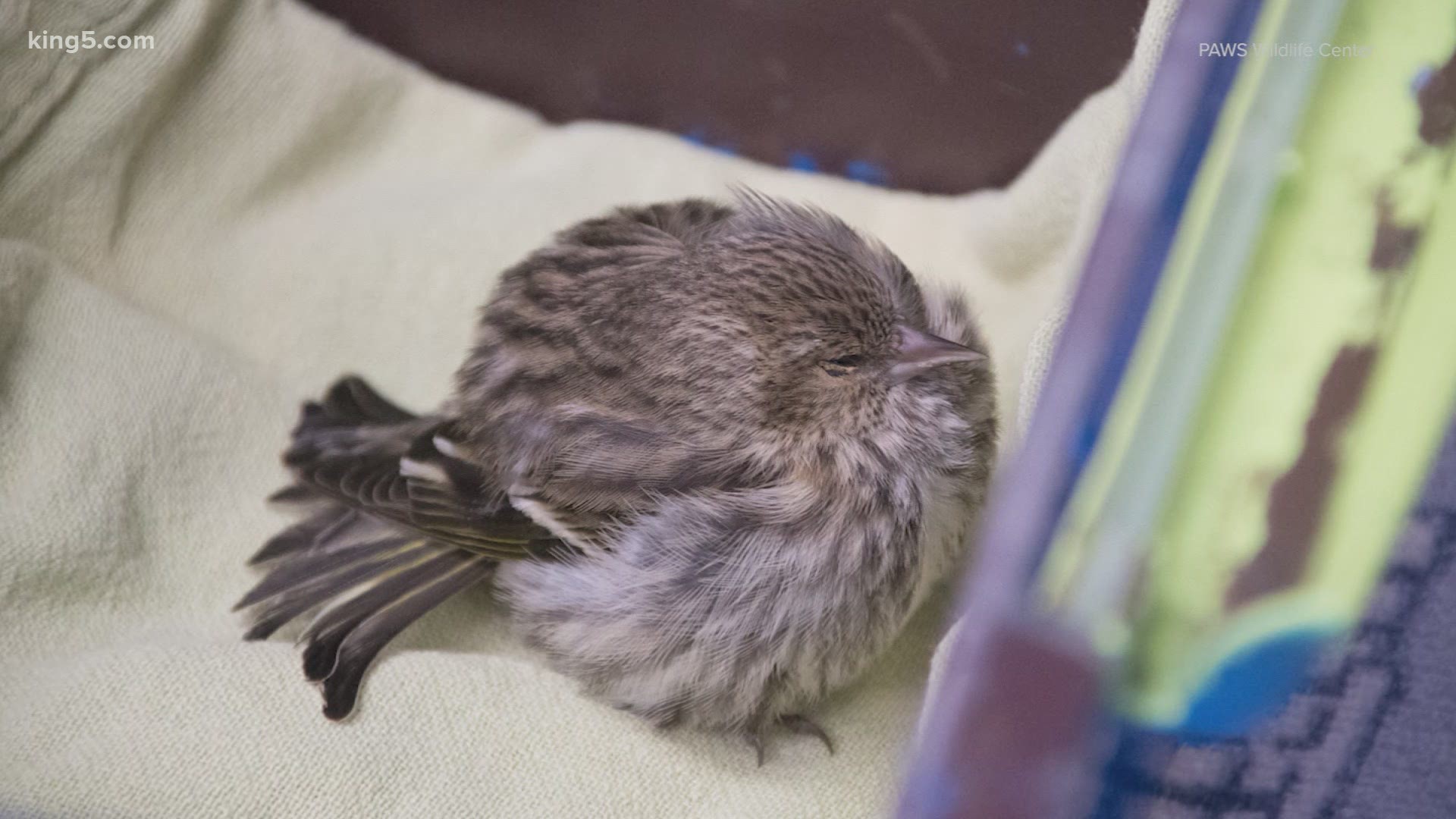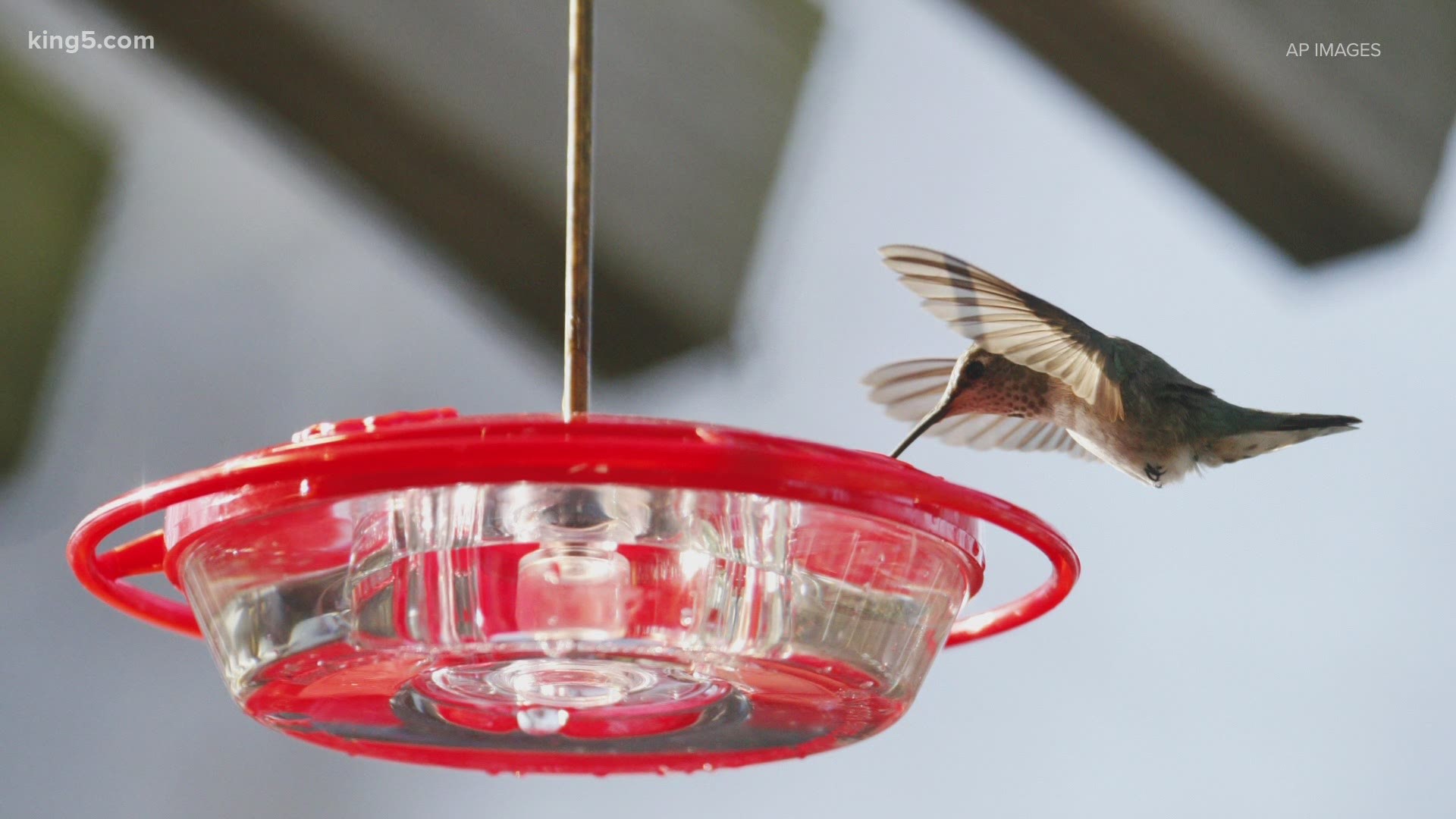LYNNWOOD, Wash. — Washington state wildlife officials are warning people to remove their bird feeders for several more weeks, to reduce the spread of a disease that's killing visiting and native birds.
According to the Audubon Society, a record irruption of Pine Siskins has flooded south into the United States. It’s common for some of the birds to carry salmonella bacteria, which can cause a usually-fatal disease called salmonellosis. So the recent influx, which brings more Siskens to crowded feeders, is believed to be fueling the spread.
“It’s providing the perfect grounds for disease transmission and the salmonella to circulate between them, and cause a lot of disease,” said PAWS Wildlife Center Veterinarian Bethany Groves.
Already this winter PAWS, which is based in Lynnwood, has received 135 Pine Siskins, which is about triple their previous season record. Not all of the birds they received were sick, but they said for the ones that are there is little they can do to treat the stricken birds, and they're often euthanized.
Other types of birds can contract the bacteria as well when visiting contaminated food or water sites.
“The first indication of the disease for bird watchers to look for is often a seemingly tame bird on or near a feeder. The birds become very lethargic, fluff out their feathers, and are easy to approach. This kind of behavior is generally uncommon to birds,” said Kristin Mansfield, a veterinarian with the Washington Department of Fish and Wildlife (WDFW). "Unfortunately, at this point, there is very little people can do to treat them. The best course is to leave the birds alone.”
This comes after interest in birdwatching soared during coronavirus lockdowns and pandemic stay-at-home orders.
Now, PAWS and the WDFW are asking people to remove their feeders to stop birds from congregating and slow the spread of disease.
Birders in western Washington are being asked to keep the feeders stored away until at least the end of March, and those east of the Cascades (where colder weather would make feeders enticing longer) are asked to keep them down until the end of April. That guidance includes hummingbird feeders, officials said, and anywhere birds might congregate. (Generally, the Seattle Audubon Society recommends not worrying too much about the welfare of hummingbirds, and has issued a statement supporting the WDFW guidance for removing feeders, including those for hummingbirds. Though not typically used by siskens for feeding, sick birds have been reported perching on these hummingbird feeders.)
“Take your feeders down, clean them with soap and water very thoroughly, disinfect them with a 10% bleach solution, and then keep them down for that time period until this irruption has passed,” said Groves.
WDFW also recommended cleaning the area around and under the feeders to decontaminate. While the agency does not recommend it, officials wrote if you do leave feeders up, please clean them with a bleach solution daily.
WDFW has a site available to report dead birds, available here.
Though humans and other animals can contract salmonella from birds, Groves said those cases are rare and isolated. Still – the state recommends wearing gloves and washing your hands thoroughly after handling the feeders.
Both PAWS and WDFW want to be clear – the birds will still be able to find food through the winter without access to these feeders. Though Groves noted, if you miss your backyard visitors – consider purchasing some native plants to attract them, while allowing some avian “social distance.”


